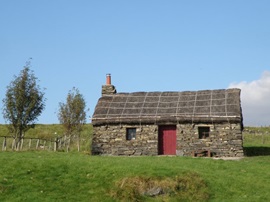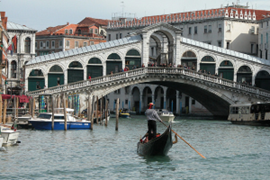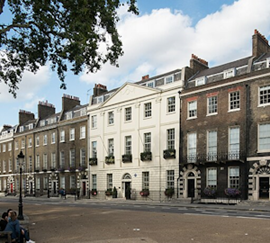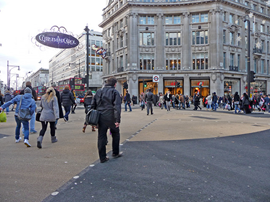Dust heap
|
This watercolour painting depicts King's Cross, London: the Great Dust Heap, next to Battle Bridge and the Smallpox Hospital by E H Dixon (1837). Notations associated with the painting describe it as a ‘View of the Great Dust Heap, King’s Cross, Battle Bridge, from the Maiden Lane (the present York Road). It was removed in 1848 to assist in rebuilding the City of Moscow, Russia.’ |
Contents |
[edit] Introduction
Dust heaps were human-made mountains of ash, cinders and combustible domestic waste or soil that accumulated around London during the 19th century. These piles of fine dust, clinker, breeze (or brieze) and other household rubbish were created by the large amounts of coal used in London from roughly 1800 to 1850. During this period, it was thought that each London household used as much as 11 tons of coal annually for domestic fires.
[edit] Early waste collection method
This form of waste management was initially instituted for practical safety purposes. It was thought that the large quantity of ash residue - if left uncollected - would block passageways and create other hazards in London.
To combat the safety issue of unmanaged household waste - which was also becoming a public eyesore - communities employed dust contractors who would be hired to collect and transport the material to the dust heaps on the outskirts of the city. For those in the dust collection market, this became a lucrative business, since the materials held varying degrees of value once separated out by labourers known as sifters or scavengers.
Domestic waste (or soil) was sold to farmers for manure. Cinders, ash, clinker and breeze were sold to brickmakers (as fuel for burning and material for making building materials; this is the origin of the terms breezeblock - or briezeblock - and cinderblock in the US). Other salvageable items (such as discarded pans and pottery) were also recovered and set aside for possible sale or reuse.
[edit] The Great Dust Heap of King’s Cross
Dust heaps were a fixture in London during Victorian times. In Our Mutual Friend by Charles Dickens, dust heaps were the source of wealth for Nicodemus (Noddy) Boffin, a lowly clerk who inherits several dust heaps from his employer and becomes The Golden Dustman. These vast piles were extremely valuable, but when it became necessary to address public sanitation issues in the 1850s, the phase out process began.
One of the most valuable and extensive of these sites in London was the Great Dust Heap. In 1848, this vast mountain was removed to make way for King’s Cross Station (which was part of the newly commissioned Great Northern Railway).
According to Vic Keegan’s Lost London 109: The Great Dust Heap, “Contemporary accounts – including W J Pinks’s venerable survey of Clerkenwell – report that the dust heap was sold – wait for it – to the government of Russia to help the re-building of Moscow after the war with Napoleon for an estimated price of £20,000.”
[edit] Related articles on Designing Buildings
- A heritage partnership agreement for King's Cross Station.
- Blockwork.
- Civil Engineering during the Industrial Revolution in Britain.
- Clinker in construction.
- Coal ash.
- Environmental engineering.
- King's Cross Station Redevelopment.
- Miasma theory.
- Three pieces of infrastructure that have saved lives.
- Waste management - explained.
[edit] External resources
- Victor Keegan, On London, Lost London 109: The Great Dust Heap.
IHBC NewsBlog
IHBC Publishes C182 focused on Heating and Ventilation
The latest issue of Context explores sustainable heating for listed buildings and more.
Notre-Dame Cathedral of Paris reopening: 7-8 December
The reopening is in time for Christmas 2025.
Stirling Prize-winning Salford building to be demolished
The Centenary Building will be bulldozed as part of the wider £2.5bn Crescent regeneration project
Volunteers work to transform 100-year-old ‘hidden’ building into bothy
The building, named Druimnashallag, is located southeast of Oban.
The new ‘Arches for HERs’ Demo site, from the Getty Conservation Institute via HE
It shows how organisations responsible for historic environment records (HER) management can benefit from its powerful features.
ICOMOS-CIF 2024 Symposium celebrates 40th anniversary in Venice
It aims to critically review current practices and theories of conservation of built heritage around the world, and more.
HES establishes new national centre for retrofit of traditional buildings
HES plans to develop the centre follows £1m of funding from UKRI Arts and Humanities Research Council.
High Court rejects oral appeal against tower block decision in historic Bloomsbury
The request was for a full Judicial Review hearing against Camden Council’s approval of a 74m-high tower block in Bloomsbury.
Mayor of London and Government announce bold plans to transform Oxford Street
Plans include turning the road into a traffic-free pedestrianised avenue, creating a beautiful public space.
Crystal Palace Subway, for 160th anniversary
The remarkable Grade II* listed Crystal Palace Subway in South London begins a new era following major restoration.

















